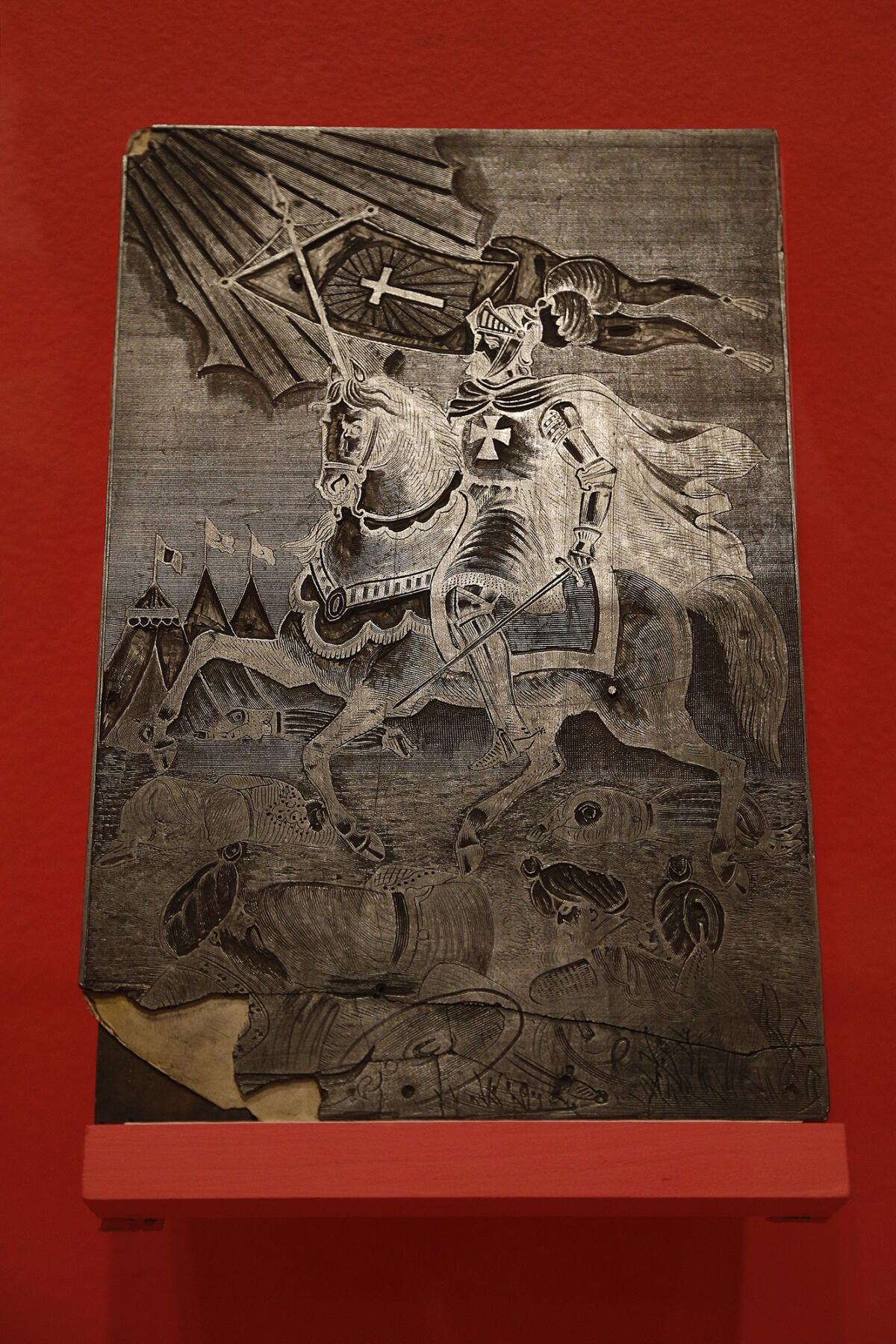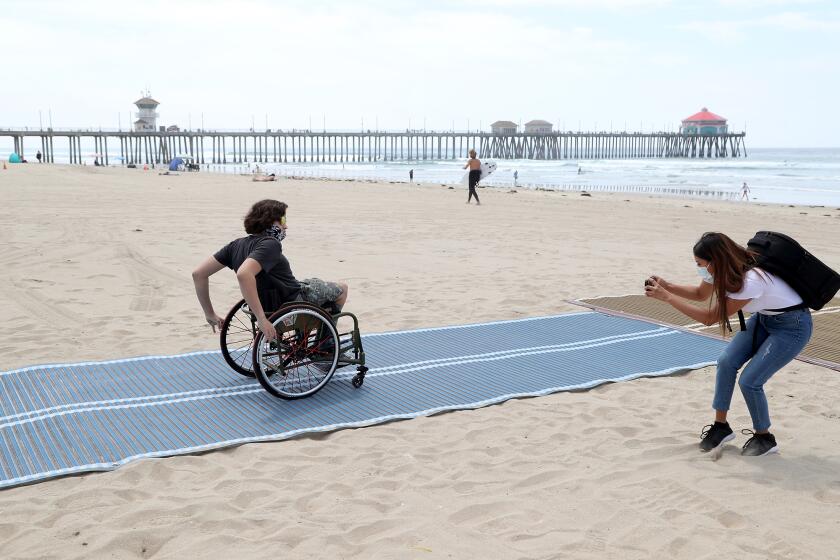‘La Calavera Catrina’ creator’s iconic imagery featured at Fullerton Museum Center

- Share via
When you walk into the Fullerton Museum Center’s current exhibit, José Guadalupe Posada’s iconic “La Calavera Catrina” greets you with her toothy smile.
The calavera, or skull, is wearing a fashionable hat for the time in which she was produced, festooned with flowers and feathers. The original lithograph has been duplicated onto postcards, handbags and T-shirts. Though many are familiar with the figure, few know anything about the artist behind it.
“Everyone knows this image,” said guest curator Consuelo G. Flores, “but very few people know it is José Guadalupe Posada who actually created this image. And it is very sad to know that when this image has been reproduced over and over and over.”
The museum’s “José Guadalupe Posada: The Iconic Printmaker and his Legacy in Popular Culture,” curated by Flores, spotlights the artist’s work and the creatives who have been inspired by his work since.
Posada has been called the father of Mexican printmaking, and his iconic relief printing has been referred to as prophetic. His depictions of life in Mexico City from 1889-1913 influenced such greats as Frida Kahlo and José Clemente Orozco, yet Posada died a pauper with few knowing his name. He created over 20,000 prints in his lifetime, all by hand.
“La Calavera Catrina,” which Posada himself always referred to as “La Pelona,” is often found in imagery representing Dia de los Muertos, or Day of the Dead, but Flores said it is also representative of the satirical humor Posada’s work was known for.
“This was his way of kind of sticking it to rich folk and Mexican elite,” said Flores, “to kind of say, ‘Hey, you are going to die too … It doesn’t matter how beautiful or rich you are. You are going to die too.’”
The piece can also be interpreted as a commentary on Mexicans who were striving to adopt European aristocratic heritage during the time period.
Posada got his start in chapbooks and newspapers, many of which are on display along with Posada’s original printing’s plates.

“He worked backwards, including the text,” said Flores, pointing out a plate used to make another one of Posada’s well-known images that depicts a lively scene of calaveras dancing and drinking. “You can see how detailed it is. You have to have real precise, steady hands.”
Posada also recognized that his audience was largely illiterate.
“They could not read, they could not write,” said Flores. “So he created images that told the story that the text told.”
The exhibit itself has taken a similar approach.
“There are so many pieces in this show that we didn’t want it too be text heavy,” said museum director, Elvia Susana Rubalcava. “So we got voice actor Gabriel Romero to do a voice tour.”
Posada’s influence was prevalent in his own time and beyond.
“He was so popular that people wanted to emulate him,” said Flores.
Highlights of the show include contemporary artists with elements of Posada’s influence, like a mixed-media piece from 2000, by the late Gina Davidson, of a dress and flowered hat called “Catrina.”

“Davidson was one of the founding members of Breath of Fire Latina Theater Ensemble in Santa Ana,” said Rubalcava. “They created this for a special show, but this costume has been used in Noche de Alters in Santa Ana. It is all hand-painted and hand-sewn.”
The show opened in February, in collaboration with Self Help Graphics & Art, a community arts center in East Los Angeles, and has proved to be a favorite among museumgoers.
“This has been one of our most popular shows at the museum,” said Rubalcava.

The exhibit has been visited by local elementary schools and high school Spanish classes as well.
“They are really taken with it, and part of it for the elementary school kids is we do a tour and then we do a print-making class in our classrooms,” Rubalcava said.
There are several events planned in conjunction with the show open to the public too, including an Artist in Focus talk with award-winning political cartoonist Lalo Alcaraz, moderated by L.A. Times columnist Gustavo Arellano this Saturday, April 23 from noon to 2 p.m.
Alcaraz received the Herblock Prize for editorial cartooning this year. His powerful piece “Vacuna o Muerte” takes inspiration from Chicano artist Emanuel Martínez’s 1967 “Tierra o Muerte,” replacing the rifle with a vaccine needle. “Vacuna o Muerte” is one of six pieces by Alcaraz included in the Posada show.
The exhibition will close on May 15, with more festivities like a performance from Lover Sonicos, led by singer/songwriter Moises Vasquez, poetry and an auction that will include some of the contemporary pieces created for the show.
More information about the exhibit can be found at fullertonmuseum.com. Fullerton Museum is open from noon to 4 p.m, Wednesday through Sunday, and admission is $10 for adults and $5 for children (free for children under 5).
All the latest on Orange County from Orange County.
Get our free TimesOC newsletter.
You may occasionally receive promotional content from the Daily Pilot.






